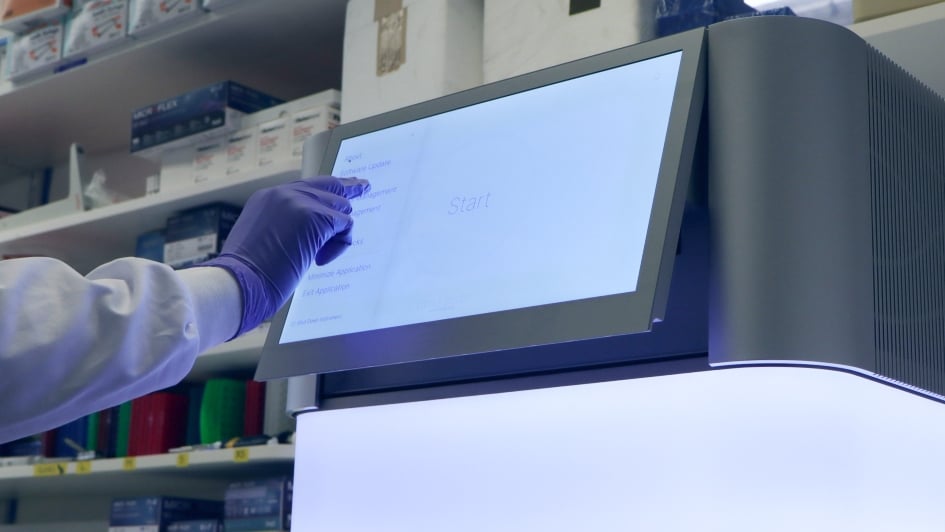Genomics Facility
Housing state-of-the-art hardware and unrivalled expertise in next generation sequencing technologies (NGS), the Genomics Facility supports researchers within The Institute of Cancer Research and partner institutions across the UK to accelerate discovery science and progress towards precision therapies.

Image: The NextSeq 2000
About the facility
Established in 2013 as the Tumour Profiling Unit (TPU), and now rebranded as the ICR’s Genomics Facility, the Facility provides access to a range of cutting-edge techniques for genomic, transcriptomic, epigenomic, spatial and single cell analysis.
It was the first in the UK and Ireland to deploy the Illumina NovaSeq 6000 system, still the gold standard for NGS experiments.
Sequencing
A wide range of sequencing options are available at the Genomics Facility. In addition to the Illumina NovaSeq 6000, NextSeq 2000 and MiSeq sequencers, the team is developing capacity in long read technology at a partnering facility.
- Whole genome sequencing (WGS)
- Whole exome sequencing (WES)
- RNA sequencing (Total and mRNA)
- DNA methylation profiling (with enzymatic conversion)
- TCR and BCR profiling in human and mouse
- Single cell analysis (BD Rhapsody, Parse Bioscience, 10X Genomics)
- Spatial transcriptomics using 10X Genomics Visium for F/F and Formalin-Fixed Paraffin-Embedded (FFPE) samples
- Spatial transcriptomics using Nanostring GeoMx (in collaboration)
The Genomics Facility has extensive expertise in working with FFPE samples for WES and RNA sequencing and hosts an automated liquid handler to provide the required accuracy, reproducibility and turn-around times.
The team of bioinformaticians is responsible for data processing, standard and custom analysis and integration of sequencing data sets. Automated pipelines for variant calling, CNV detection, structural rearrangements, expression analysis, etc are built around industry-standard and open-source software. The team also provides detailed analysis for single cell and spatial transcriptomics.
Furthermore, the Facility investigates new approaches for the development and implementation of novel or improved genomics workflows and runs pilot projects to test and compare multiple assays in collaboration with researchers.
Contact us
For more information, please contact the Facility manager Shichina Kannambath ([email protected]) or the Facility at [email protected].
